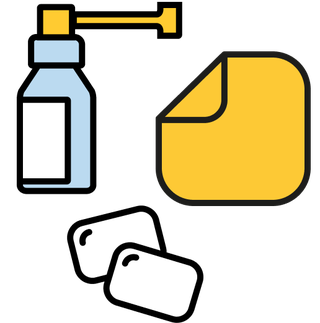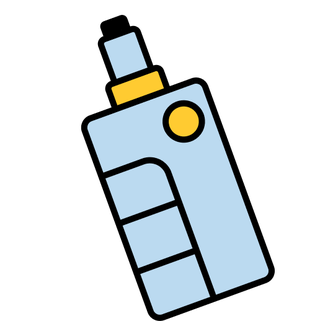Managing nicotine withdrawal symptoms
When you quit smoking, you might feel irritable, restless, or find it hard to concentrate. You may also get strong urges to smoke.
These are common nicotine withdrawal symptoms, and many people experience them after quitting. The key is to plan ahead so that you feel more prepared to manage them.
What is nicotine withdrawal?
Nicotine is an addictive substance found in cigarettes. When you smoke regularly your body gets used to having nicotine.
When you stop smoking, your body can feel uncomfortable because it has become dependent on nicotine to feel "normal". These uncomfortable feelings are called nicotine withdrawal symptoms, they can be mild for some people but more difficult for others to manage.
Here are some common withdrawal symptoms you may experience:
- strong urges or cravings to smoke
- trouble concentrating
- feeling restless
- trouble sleeping
- being easily upset, feeling irritable, frustrated, angry
- feeling anxious, tense, or low in mood
If you do experience any of these symptoms, don’t worry! Keep in mind that they do not last. They are also a sign your body is starting to heal and recover from the effects of smoking.

How long do nicotine withdrawal symptoms last?
After your last cigarette, withdrawal can start within a few hours. Symptoms are usually strongest during the first week, especially in the first 3 days.
On average, symptoms last 3 to 4 weeks. However, some people may feel them for longer, sometimes even for a few months.
It is important to have a plan to deal with these symptoms. Keep reminding yourself why you want to quit. Focusing on your reasons will help you stay strong while your body adjusts.
Remember, even 1 cigarette can get you stuck in the cycle of cravings and withdrawal again.
There is no safe amount of smoking, it will always lead you back to the habit. To stay smoke free, avoid even a single puff.
Did you know?
Once you reach 28-days smoke free, you are 5 times more likely to stay quit for good!
How to manage nicotine withdrawal symptoms
Getting strong urges to smoke is one of the most common withdrawal symptoms, and they can be hard to resist. Here are some strategies you can use to help manage cravings.
Use stop smoking products
Stop smoking products can help reduce cravings and make it easier to manage withdrawal symptoms as you adjust to life without cigarettes.
There are more proven products to help you quit smoking than ever before. Ask a GP or local Stop Smoking Service about the products below.

Nicotine-free medicines stop nicotine from affecting your brain, making smoking less enjoyable.

Nicotine replacement therapies (NRTs) like patches, gum and nasal sprays give your body lower doses of nicotine, without the harmful chemicals found in cigarette smoke.

Smoking routines can be hard to break, but vaping can help you gradually let go of these habits by letting you inhale nicotine as vapour instead of smoke, reducing health risks of smoking right away.
Combine products for better success
To give yourself the best chance of quitting, it is a good idea to combine treatments.
For example, research shows that if you combine a nicotine-free medicine with nicotine patches or gum, you are much more likely to quit for good.
Combining NRTs is also a key part of managing cravings. The best approach is to combine a fast-acting source of nicotine, like a mouth spray or vape with a slow-acting source of nicotine like a patch that eases you out of dependence without tipping you into withdrawals.
Did you know?
While nicotine is a highly addictive drug, it does not contain toxic chemicals found in cigarettes, including tar and tobacco.
When withdrawal symptoms hit, distract yourself!
When you get a craving or you start feeling low, it helps to find ways to distract yourself and take your mind off smoking.
Below are some simple tips you can use to manage those tough moments and help lift your mood.

Get moving
Try a quick burst of activity to get your blood pumping and your lungs working. It’s not just a good distraction, it’ll help you feel better too.

Remember that the cravings will pass
Remind yourself that cravings and bad feelings will go away. They are only temporary! With time, they will fade, and each day will feel a little easier.

Avoid triggers
You might also feel like smoking when you are around people who smoke or when something reminds you of smoking, like having a cup of coffee. These are called triggers. So, for the first 28 days, stay away from places or situations that make you want to smoke.

Keep your mouth busy
Chew on things like carrots, celery sticks, or sugar-free gum. These can help satisfy the urge to have something in your mouth, making it easier to resist the temptation to smoke. Plus, choosing healthy snacks can give you a boost of energy.

Try a deep breathing exercise
Take a slow breath in through your nose, then gently breathe out through your mouth. This can help you relax and make cravings feel easier to handle. Try it a few times whenever you feel stressed or want a cigarette.

Keep your motivation strong
Maybe you're quitting for your family, to save money or to improve your health. Whatever your reasons, write them down and keep them in a place where you can see them.
Did you know?
There are now twice as many people in England who have quit smoking as those who still smoke.
You can beat smoking withdrawal symptoms!
The most important thing to remember about nicotine withdrawal symptoms is that they do not last forever. The first few days might be tough as your body adjusts, but the worst will soon be over.
You can overcome these withdrawal symptoms and quit. Every cigarette you don’t smoke is a step towards a healthy smoke-free life.

